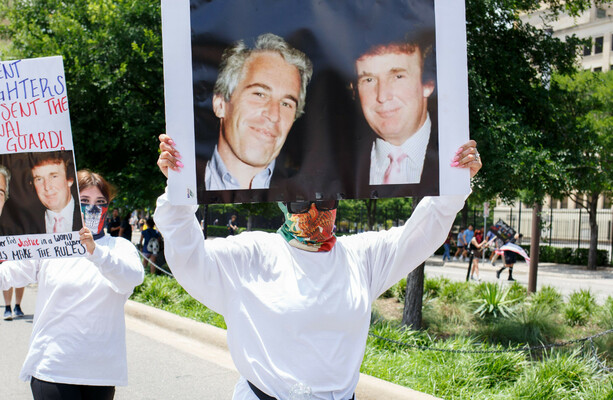Debunked: Amid Reports of a Cryptic Trump-Epstein Letter, Misinformation Muddies the Waters
Amidst the swirling vortex of political intrigue and online speculation, a purported letter between former President Donald Trump and convicted sex offender Jeffrey Epstein has surfaced, igniting a firestorm of conjecture and misinformation. The alleged letter, whose authenticity remains unverified, is purportedly dated March 2016 and contains cryptic references to “mutual friends” and “private matters.” However, fact-checking organizations and reputable news outlets have swiftly debunked the letter as a fabrication, highlighting the dangers of misinformation in the digital age. This incident underscores the critical need for media literacy and the importance of relying on credible sources, especially in the face of sensationalized or unverified claims.
The genesis of this misinformation campaign can be traced back to online forums and social media platforms, where the alleged letter first gained traction. Shared and amplified within echo chambers, the letter rapidly spread, fueled by pre-existing narratives surrounding Trump and Epstein’s past association. While the two men were known to have moved in similar social circles in the 1990s and early 2000s, attending parties and social events together, concrete evidence of a close relationship or illicit dealings has never been substantiated. The emergence of the fabricated letter has only served to further muddy the waters, adding another layer of complexity to an already convoluted narrative.
Experts in online disinformation and media manipulation warn that such fabricated content poses a serious threat to the integrity of public discourse. The rapid spread of the fake letter demonstrates how easily false information can be disseminated and accepted as truth, especially when it aligns with pre-existing biases or beliefs. This phenomenon, often referred to as “confirmation bias,” allows individuals to readily accept information that confirms their existing worldview while dismissing or ignoring contradictory evidence. In the case of the Trump-Epstein letter, individuals already harboring negative opinions about either man might be more inclined to believe the letter’s authenticity without seeking further verification.
The debunking of the letter by reputable fact-checking organizations highlights the importance of critical thinking and media literacy. These organizations employ rigorous methodologies to verify information, tracing the origins of claims and scrutinizing the evidence presented. In this instance, fact-checkers were quickly able to expose the letter as a fabrication, pointing to inconsistencies in the formatting, language, and alleged provenance of the document. They emphasized the absence of any corroborating evidence from credible sources, reinforcing the importance of relying on verified information.
The incident also underscores the role of social media platforms in the spread of misinformation. While these platforms have become invaluable tools for communication and information sharing, they also provide fertile ground for the rapid dissemination of false or misleading content. The algorithms that govern these platforms often prioritize engagement and virality over accuracy, inadvertently amplifying sensationalized content that captures public attention. This dynamic creates a challenging environment for discerning truth from falsehood, requiring individuals to exercise heightened vigilance and skepticism when encountering information online.
Moving forward, it is crucial to cultivate a more discerning approach to information consumption. This includes developing critical thinking skills, seeking out multiple perspectives, and verifying information from reliable sources. Fact-checking organizations play a vital role in this process, providing independent and unbiased assessments of claims circulating in the public domain. By embracing a more critical and informed approach to information, we can collectively mitigate the harmful effects of misinformation and safeguard the integrity of public discourse. This incident serves as a stark reminder of the need for media literacy in the digital age and the importance of relying on credible sources in the pursuit of truth. The ease with which fabricated information can spread online necessitates a collective effort to combat misinformation and uphold the principles of factual accuracy and journalistic integrity. Only through a concerted effort can we navigate the complex information landscape and ensure that public discourse is grounded in truth, not falsehood.


